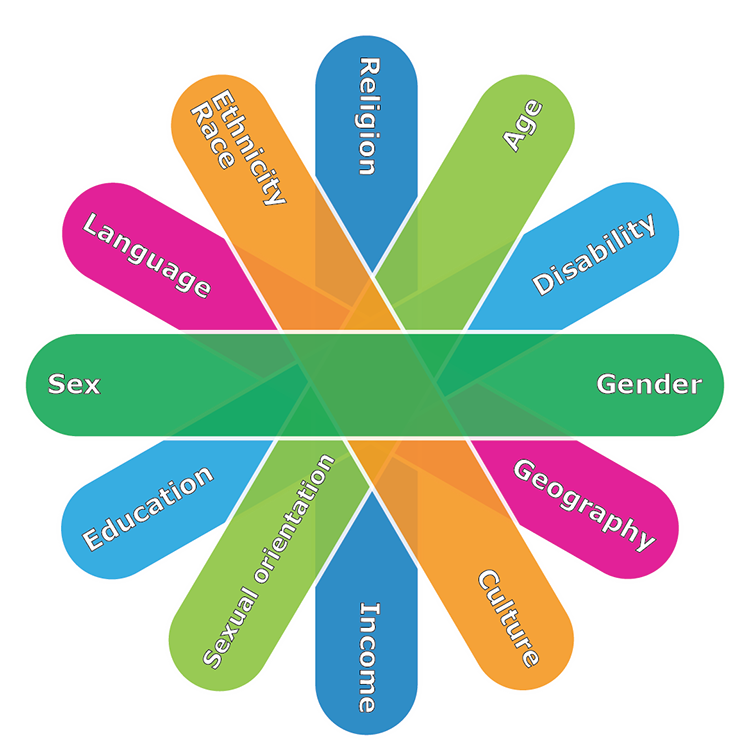Introduction to GBA Plus
Introduction to Intersectionality
As public servants, all of the work we do affects diverse groups of people. Because of the impacts of our work, we have to consider that groups of people are not homogeneous, as they have multiple, and diverse intersecting factors that impact how they understand, and experience government initiatives. Applying an intersectional approach helps you assess the potential impacts – positive or negative – of initiatives based on their multiple factors, enabling you to identify risks, and potential challenges at an early stage and create mitigation strategies. Applying an intersectional approach should be done at all stages of an initiative, from development to implementation. Considering and identifying the diversity and multiple factors of people helps us to innovate and to consider issues and policies in a different way.
It is essential to recognize that people have multiple and diverse factors that intersect to shape their perspectives, ideologies and experiences. For example, consider the multiple factors of an immigrant man with a disability. Rather than isolating the experience of being an immigrant from that of being a man from that of being a person with a disability, adopting an intersectional approach will enable you to see this individual as a whole being, with multiple simultaneous factors shaping who they are and their experience of the world.
 Think big! The term “intersectionality” was coined by American scholar Kimberlé Williams Crenshaw in 1989. While notions of intersectionality originated in the United States of America, it has been adopted and adapted around the world by individuals and groups that are seeking to identify the root of various inequalities.
Think big! The term “intersectionality” was coined by American scholar Kimberlé Williams Crenshaw in 1989. While notions of intersectionality originated in the United States of America, it has been adopted and adapted around the world by individuals and groups that are seeking to identify the root of various inequalities.
Content warning: The following video includes graphic scenes of police brutality experienced by racialized women in the U.S. This content may be disturbing to some viewers. We prefer to warn you.
View Kimberlé Williams Crenshaw’s renowned Intersectionality TedTalk.
You can also view other videos from Kimberlé Crenshaw discussing intersectionality that do not include graphic scenes:
Crenshaw, Kimberlé. “What is Intersectionality?” National Association of Independent Schools (NAIS). 2017.
“Kimberlé Crenshaw Discusses ‘Intersectional Feminism” Lafayette College. October 15, 2015.
Crenshaw, Kimberlé. “On Intersectionality –keynote- WOW 2016” Women of the World Festival 2016, Southbank Centre. March 14, 2016.

Text version of Intersectionality image: graphic illustrating some of the identity factors considered in GBA Plus
This figure illustrates some of the factors which can intersect with sex and gender. Six oblong shapes of differing colors overlap and fan out. Each oblong has two identity factors written on it. The top oblong has “sex and gender” written in a larger font. Starting below sex and gender and going clockwise, the additional identities identified are: geography, culture, income, sexual orientation, education, language, race, ethnicity, religion, age and disability.